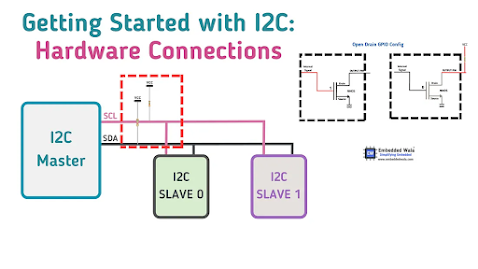Getting Started with SPI: A Beginner’s Guide

SPI (Serial Peripheral Interface) is a synchronous communication protocol that enables data transfer between microcontrollers and peripheral devices. It is a full-duplex , master-slave protocol which means data can be sent and received simultaneously. When the master device sends data to the slave device, the slave device can send data back to the master device without waiting for a separate read operation. It is commonly used in embedded systems, especially in applications requiring high-speed data transfer. The SPI protocol requires four pins: MOSI (Master Output Slave Input): The MOSI pin is used by the master device to transmit data to the slave device. MISO (Master Input Slave Output): The MISO pin is used by the slave device to transmit data back to the master device. SCLK (Serial Clock): The SCLK pin provides the clock signal used to synchronize the data transfer between the master and slave devices. CS (Slave Select): The CS...





